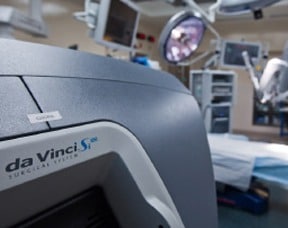NEW YORK, NY (PRWEB) AUGUST 02, 2016
Recently a paper published by the Lancet journal reported on the outcome of prostate cancer surgery. The study was designed to compare the results of open versus robotic prostate surgery. The study compared the results of 131 robotic and 121 open prostatectomies at 12 weeks after surgery. The study was run in Australia at a single institution which hosts the only robotic facility in the country.
The robotic surgeon in the study was relatively new in the field with 200 cases at the beginning of the study and 1000 cases at the end of the study during a 2-year time span. The surgeon who performed open surgery, on the other hand, was experienced with 15 years and 1500 surgeries at the start of the study. The learning curve of a surgeon and surgeon experience are known topics in the robotic surgery literature. Dr. Samadi states that “several studies have shown the relation of surgical, oncologic, sexual and urinary outcome with the surgeon’s experience and technique. It is one of the most important factors which can impact the results of a well-designed study.”
At 12 weeks following surgery the researchers could not show any difference in urinary and sexual function between the two types of surgeries. This is an expected finding as the recovery timeline for both types of surgeries are the same. However, as presented in the published study, patients who underwent robotic surgery experienced lower pain, lower complications and spent lesser number of days at the hospital. There were lower complications in robotic surgery and transfusion rates were lower as well.
In this study, patients with robotic surgery had higher rate of lymph node involvement. Although the stage of the disease for both groups of study were the same, higher positive rates in lymph node involvement might show the more aggressive nature of tumors in patients undergoing robotic surgery compared to open surgery.
Urinary symptoms after surgery tend to increase & it is an expected finding in patients undergoing surgical removal of the prostate. Gaining continence and resolving urinary symptoms takes several months. The Lancet study had not presented a comparison on the continence rate of open and robotic surgery. According to Dr. Samadi, “urinary continence after prostate surgery is dependent on the experience of the surgeon. Several past studies have published on the role of surgeon experience in gaining urinary continence after prostate surgery.”
Sexual function after prostate surgery depends on nerve sparing, technique of surgery and surgeon experience. These modulating factors are well known in the current literature. The recent study had not reported on the nerve sparing status of the patients in each group. Return of sexual function after prostate surgery may take as long as 3 years after surgery. As potency rate is usually reported 12 months after surgery, it is too soon to expect the return of sexual function in patients in either surgery group.
Dr. Samadi suggests, “It is best to wait for the 1st and 2nd year follow up data, which should be in accordance with the previous studies indicating a higher potency and continence rate in robotic surgery. As proved by the new study, robotic surgery is safer than open surgery with fewer complications and blood transfusion rate.”
Patients newly diagnosed with prostate cancer can contact world renowned prostate cancer surgeon and urologic oncologist, Dr. David Samadi, for a free phone consultation and to learn more about prostate cancer risk, by calling 212-365-5000 or visiting prostatecancer911.com.


